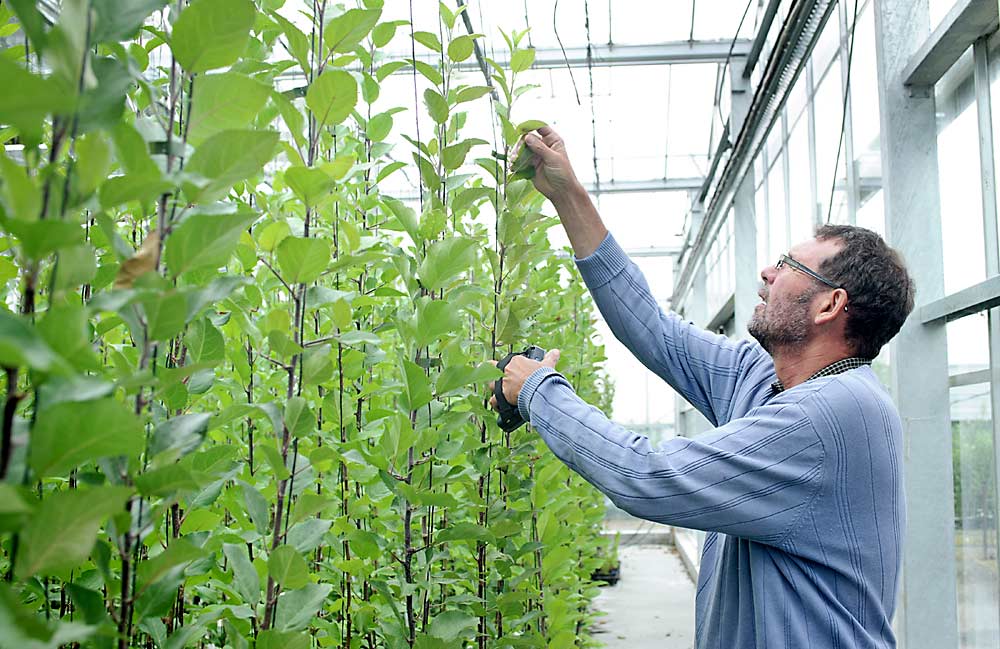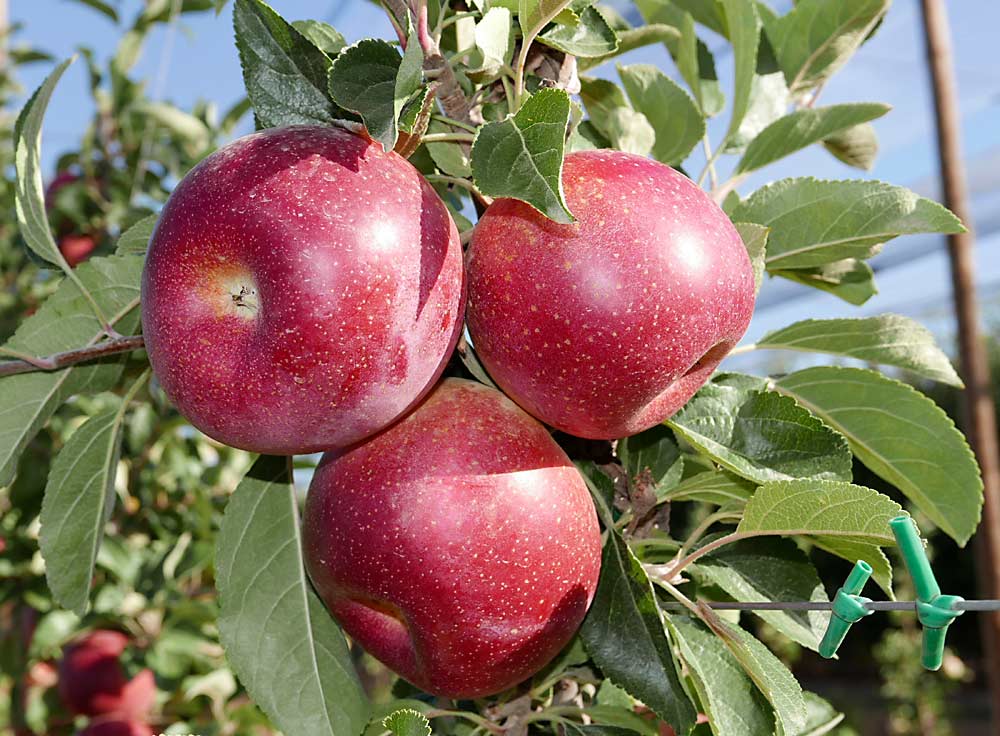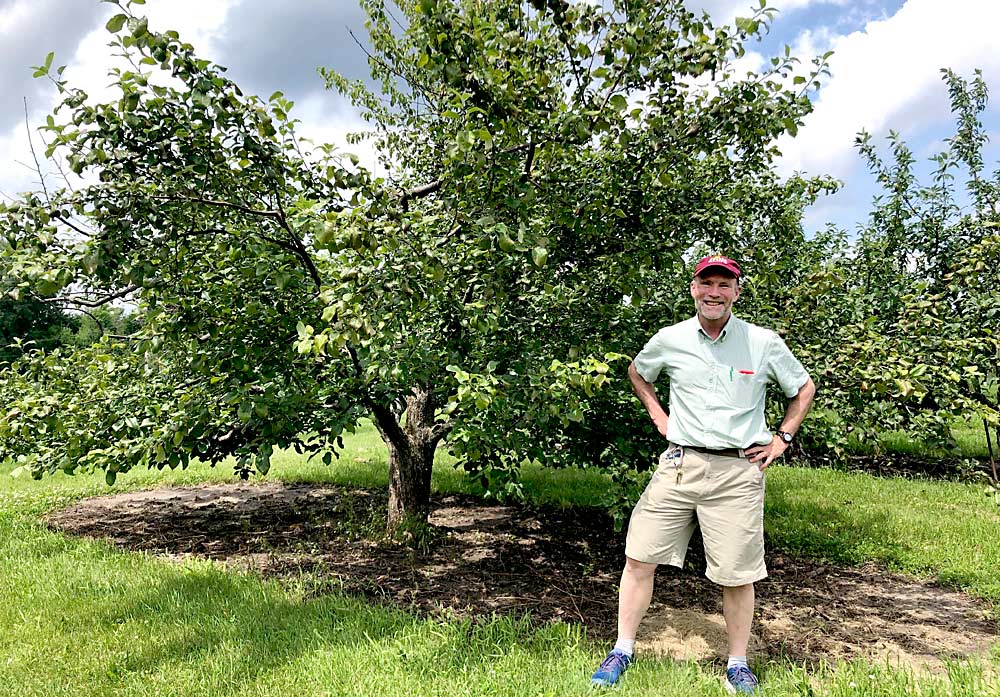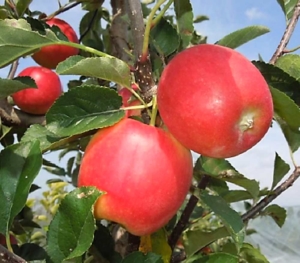
Developing a new tree-fruit cultivar is a long process that begins with breeders deciding which specific traits growers will want 15, 20 or even 30 years into the future. Those predictions have become increasingly difficult with the unpredictability of climate change and its effects on rainfall patterns, seasonal temperatures, disease and pest pressure, timing of spring blooming and fruit ripening, and ultimately fruit quality.
“It is a lot of crystal-balling for sure,” said James Luby, professor in the University of Minnesota Department of Horticultural Science and director of its breeding program.
Despite the uncertainty, breeding programs and research march forward. The Cherry Adaptation to Climate Change (A3C) group at the plant biology and breeding department of France’s National Research Institute for Agriculture, Food and Environment, for instance, is studying the genes involved in chill requirements, flowering times and crack resistance in sweet cherries, and they are developing methods to breed for those traits they think will be important as temperatures and precipitation alter with climate change in the future. Elsewhere, researchers in the U.S., China and Spain just published results of a joint study identifying genes that help peaches tolerate cold, drought and ultraviolet radiation levels, as a way to prepare for coming climatic conditions.
“I think everyone now understands that one of the futures that is ahead of us is a hotter climate. It’s happening now, and the extent to which it will develop further is a little bit indefinite, but it’s become more and more important as the years have gone past,” said Richard Volz, an apple and pear breeder at the New Zealand Institute for Plant & Food Research Ltd. He is also a partner in the Hot Climate Programme, a joint effort with growers and researchers in the Catalonia region of Spain, which aims to develop pear and apple cultivars that are better adapted to future conditions.
Hot climate cultivars
A collaboration between New Zealand’s Plant & Food Research, the Catalan Institute of Agrifood Research and Technology and Fruit Futur, a group of Catalan growers, with strategic commercialization partner T&G Global, the Hot Climate Programme has been working since 2002 to develop fruit trees better suited to the warming climate. Specifically, it targeted apple and pear cultivars for the Catalonia region of northern Spain, where summer temperatures often top 40 degrees Celsius/104 degrees Fahrenheit during the day and 20 C/68 F at night. Growers there had begun to report heat-related issues such as poor reddening, sunburn, texture softening and storage problems.

The program released its first apple variety to growers worldwide in 2020. Known as HOT84A1, the apple was bred to deliver good red color, a crunchy texture and postharvest performance.
“We’ve probably got about 20 apples and pears, roughly speaking, that are in the elite phase of testing, some of which are reasonably close to being commercialized, but nothing is final until it is commercialized,” Volz said, adding that he’s hoping some will be ready for release in a few years. There are even more in the program’s evaluation pipeline.
The Hot Climate Programme started out by making use of the New Zealand program’s extensive genetics work to identify trees that had heat-compatible characteristics, doing crosses and then planting the seedlings in Spain.
“We’ve passed that first generation now and are using parents that have been selected in Spain, (so) theoretically there should be a high proportion of seedling material that is more adapted,” Volz said. In addition, they are beginning to introduce other traits, including disease and pest resistance characteristics from parent stock in New Zealand.
“Even though it’s hot and dry conditions in Catalonia for the most part, there’s a small part of Catalonia that is a little bit wetter than other areas, so for apple we need to incorporate apple scab, powdery mildew and fire blight resistance; and for pear, we’re also looking at psylla resistance,” he said.
Nearly halfway around the world, the University of Minnesota breeding program is also working to develop early-season apples that do well in the warmer nighttime summer temperatures that are becoming more common in apple-growing regions of the northern United States, Luby said.
“If you don’t have the cool environmental kick coming in, you’re relying on the genetics to get things well-colored in the early part of the season,” he said. “One of our postdocs is working on this issue right now.”
Luby said his program is also looking to address early apples’ storage integrity; doing crosses very specifically targeted for resistance to fire blight, which is becoming more prevalent in many parts of the country as the climate has changed; and monitoring up-and-coming cultivars for their resilience in the face of increasing drought. The 2021 season highlighted the need for drought resilience, as barely any rain fell there from May through early October.

Predicting the future
Breeding for climate change is actually nothing new for many breeding programs, including the Minnesota program.
“Especially in the last 20 years of my 40-year career, we’ve been selecting under changing conditions,” Luby said. “Some of the new material that’s going to be coming out, even in the next decade, has been selected as we’ve been going through some of these ‘early stages’ of climate change.”
Of course, breeding for the future is always difficult, but it has been made much more so with the extent and effects of climate change being unknown.
“There’s always this tension or challenge between trying to do a whole lot of different things, because you’re not sure where the future will go, but also focusing. Otherwise, you end up not getting very far on anything,” Volz said. Plant & Food Research is managing that balancing act by developing a large number of breeding lines and then deciding which to focus on.
Since breeding pipelines take 15–20 years to develop new cultivars, and growers then plant and keep them in the orchard for another 10–15 years, breeders today should be planning for about three decades into the future, Luby said. “Beyond 30 years — that’s where we can start to get creative with our thinking and with our projections of what might happen,” he said. “Of course, the uncertainty gets much greater the farther out you go.”
Breeders also must consider other unknown variables: Consumer preferences in taste, color and texture will continue to be important, as will competition from similar cultivars, something that has already become quite fierce in the apple market, Volz said.
“So, we really need to be able to have a strategy to produce varieties that not only fill a market space but also are adapted to these environmental conditions that are changing,” he said.
—by Leslie Mertz







Leave A Comment